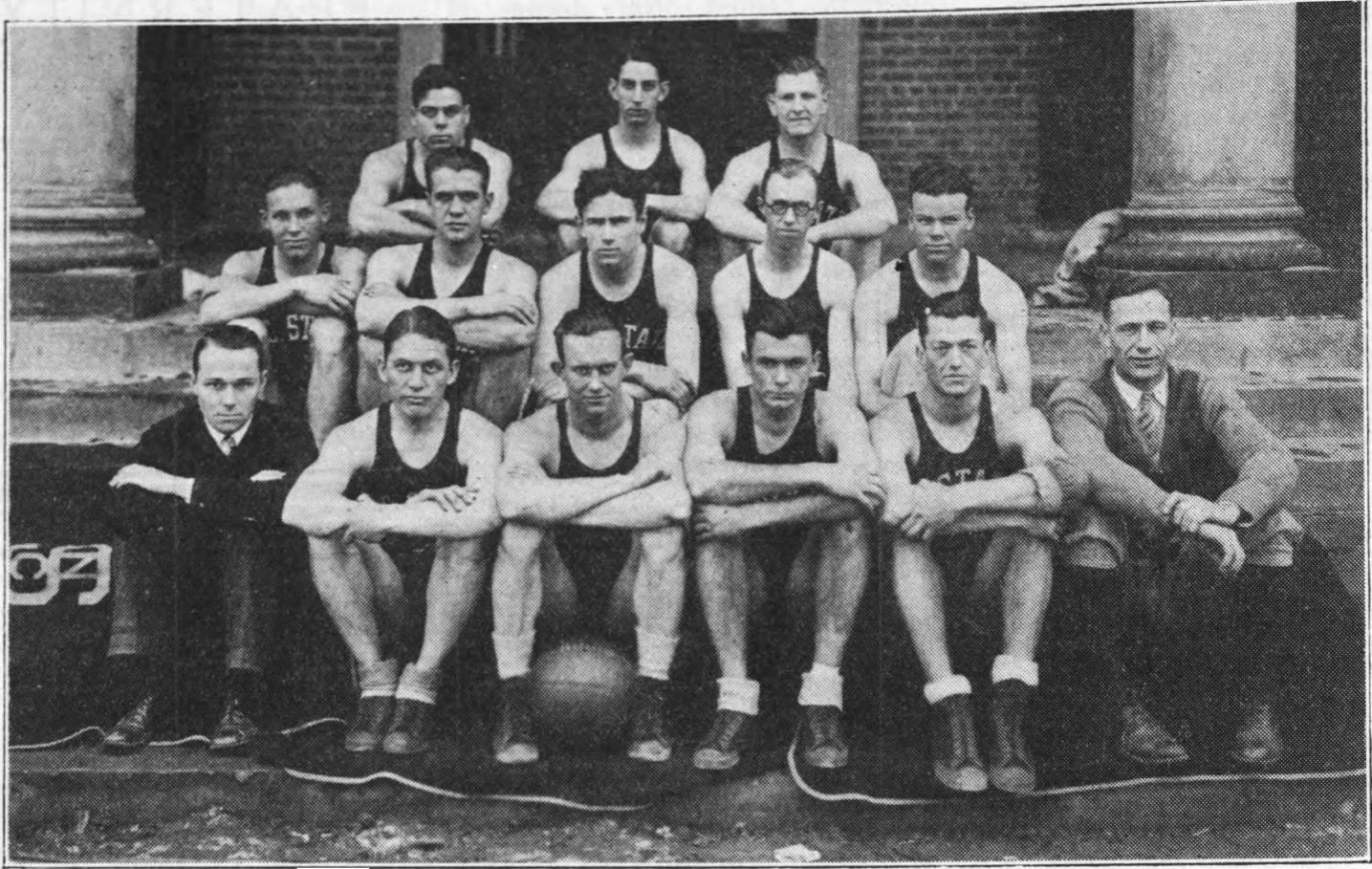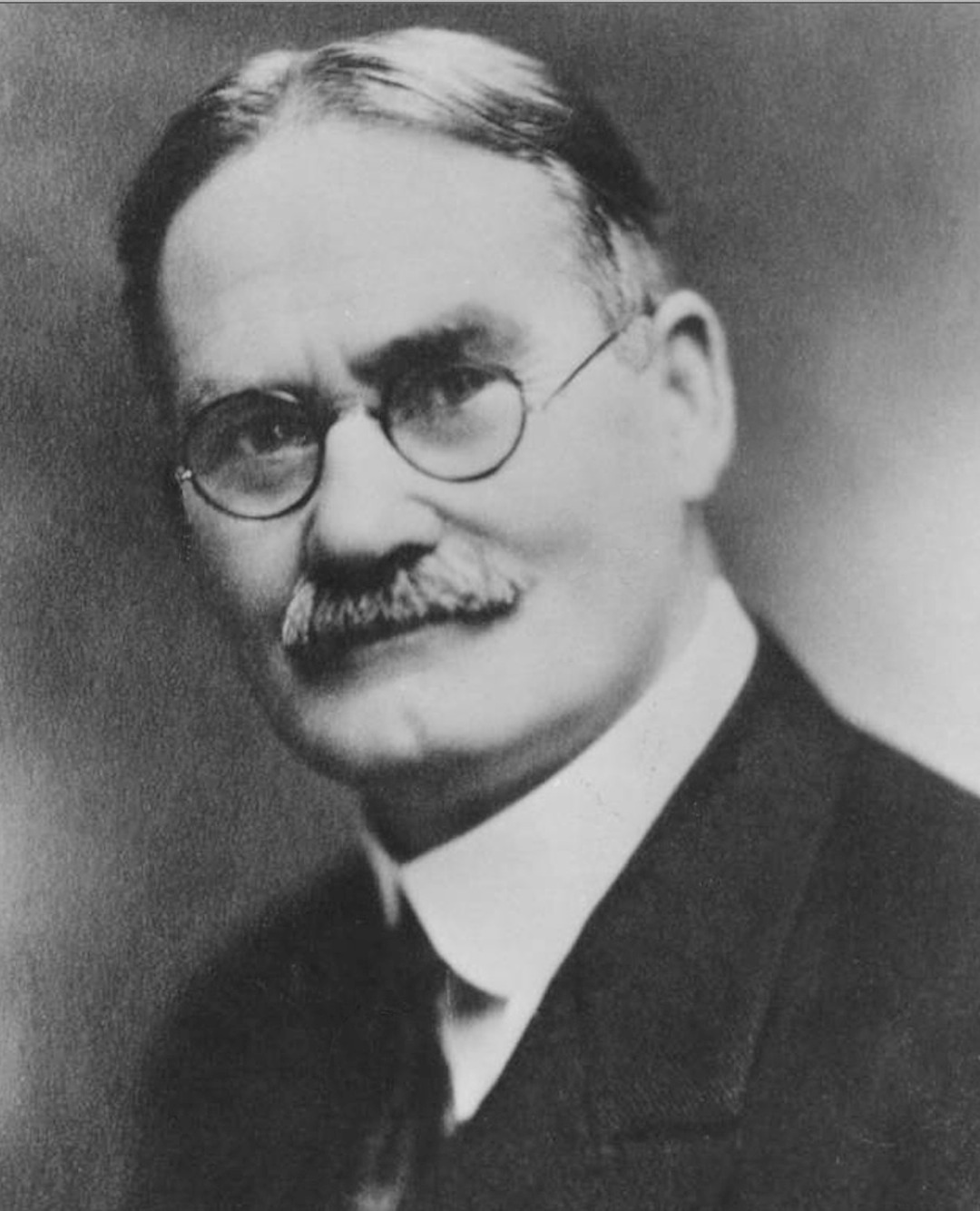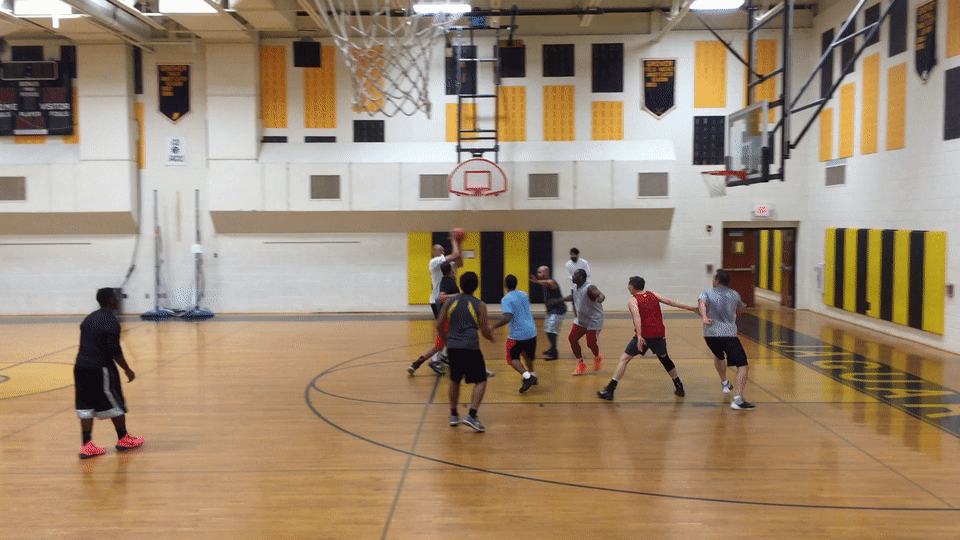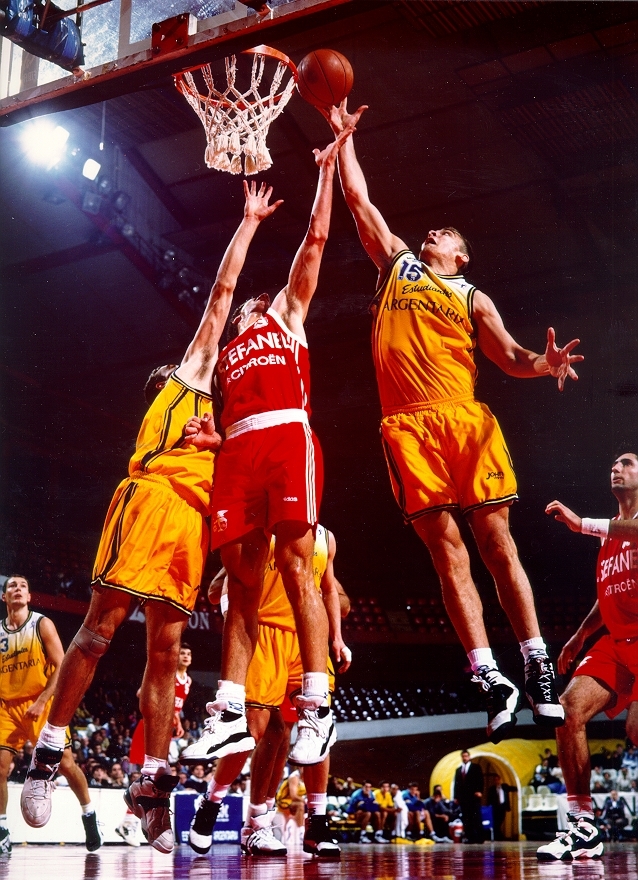|
David Thompson (basketball)
David O'Neil Thompson (born July 13, 1954), commonly known by the nickname "Skywalker", is an American former professional basketball player. He played with the Denver Nuggets of both the American Basketball Association (ABA) and National Basketball Association (NBA), as well as the Seattle SuperSonics of the NBA. He was previously a star in college for North Carolina State, leading the Wolfpack to its first NCAA championship in 1974. Thompson is one of the ten players to score 70 or more points in an NBA game. He was inducted into the Naismith Basketball Hall of Fame in 1996. Thompson was known for his exceptional leaping ability that enabled him to become one of the game's premier dunkers in the 1970s and earned him the nickname of "Skywalker". Michael Jordan said, "The whole meaning of vertical leap began with David Thompson." Bill Walton described Thompson as "Michael Jordan, Kobe Bryant, Tracy McGrady, and LeBron James rolled into one". High school career Thompson attend ... [...More Info...] [...Related Items...] OR: [Wikipedia] [Google] [Baidu] |
NC State Wolfpack Men's Basketball
The NC State Wolfpack men's basketball team represents North Carolina State University in NCAA Division I men's basketball competition. NC State is one of the seven founding members of the Atlantic Coast Conference. Prior to joining the ACC in 1954, the Wolfpack were members of the Southern Conference, where they won seven conference championships. As a member of the ACC, the Wolfpack has won 11 conference championships, as well as two national championships in 1974 and 1983. Since 1999, the Pack has played most of its home games at Lenovo Center, which is also where the NCAA championship trophies are kept. Prior to 1999, they played at Reynolds Coliseum. History NC State began varsity intercollegiate competition in men's basketball in 1911. In 105 years of play, the Wolfpack ranks 25th in total victories among NCAA Division I (NCAA), Division I college basketball programs and 26th in winning percentage among programs that have competed at the Division I level for at least 26 ye ... [...More Info...] [...Related Items...] OR: [Wikipedia] [Google] [Baidu] |
1974 NCAA Division I Men's Basketball Tournament
The 1974 NCAA Division I basketball tournament involved 25 schools playing in single-elimination play to determine the national champion of men's NCAA Division I college basketball. It was the first tournament to be designated as a Division I championship—previously, NCAA member schools had been divided into the "University Division" and "College Division". The NCAA created its current three-division setup, effective with the 1973–74 academic year, by moving all of its University Division schools to Division I and splitting the College Division members into Division II (fewer scholarships) and Division III (no athletic scholarships allowed). Previous tournaments would retroactively be considered Division I championships. The tournament began on March 9, 1974, and ended with the championship game on March 25 in Greensboro, North Carolina. Until 2019, when Virginia defeated Texas Tech, it was the last tournament in which neither school had previously appeared in any natio ... [...More Info...] [...Related Items...] OR: [Wikipedia] [Google] [Baidu] |
Basketball
Basketball is a team sport in which two teams, most commonly of five players each, opposing one another on a rectangular Basketball court, court, compete with the primary objective of #Shooting, shooting a basketball (ball), basketball (approximately in diameter) through the defender's Basket (basketball), hoop (a basket in diameter mounted high to a Backboard (basketball), backboard at each end of the court), while preventing the opposing team from shooting through their own hoop. A Field goal (basketball), field goal is worth two points, unless made from behind the 3 point line, three-point line, when it is worth three. After a foul, timed play stops and the player fouled or designated to shoot a technical foul is given one, two or three one-point free throws. The team with the most points at the end of the game wins, but if regulation play expires with the score tied, an additional period of play (Overtime (sports), overtime) is mandated. Players advance the ball by boun ... [...More Info...] [...Related Items...] OR: [Wikipedia] [Google] [Baidu] |
Assist (basketball)
In basketball, an assist is attributed to a player who passes the ball to a teammate in a way that leads directly to a score by field goal (basketball), field goal, meaning that they were "assisting" in the basket. An assist is also credited when a basket is awarded due to defensive goaltending. There is some judgment involved in deciding whether a passer should be credited with an assist. An assist can be scored for the passer even if the player who receives the pass makes a basket after dribbling the ball for a short distance. However, the original definition of an assist did not include such situations,Hal BockGive an assist to NBA, ''The Milwaukee Journal Sentinel'', April 28, 2002. so the comparison of assist statistics across eras is a complex matter. Only the pass directly before the score may be counted as an assist, so no more than one assist can be recorded per field goal (unlike in other sports, such as ice hockey). A pass that leads to a shooting foul and scoring by f ... [...More Info...] [...Related Items...] OR: [Wikipedia] [Google] [Baidu] |
Rebound (basketball)
In basketball, a rebound, sometimes colloquially referred to as a board, is a statistic awarded to a player who retrieves the ball after a missed field goal or free throw. Rebounds in basketball are a routine part in the game; if a shot is successfully made possession of the ball will change, otherwise the rebound allows the defensive team to take possession. Rebounds are also given to a player who tips in a missed shot on their team's offensive end. A rebound can be grabbed by either an offensive player or a defensive player. Rebounds are divided into two main categories: "offensive rebounds", in which the ball is recovered by the offensive side and does not change possession, and "defensive rebounds", in which the defending team gains possession. The majority of rebounds are defensive because the team on defense tends to be in better position (i.e., closer to the basket) to recover missed shots. Offensive rebounds give the offensive team another opportunity to score whether ... [...More Info...] [...Related Items...] OR: [Wikipedia] [Google] [Baidu] |
Point (basketball)
Points in basketball Basketball is a team sport in which two teams, most commonly of five players each, opposing one another on a rectangular Basketball court, court, compete with the primary objective of #Shooting, shooting a basketball (ball), basketball (appro ... are used to keep track of the score in a game. Points can be accumulated by making field goals (two or three points) or free throws (one point). The team that has recorded the most points at the end of a game is declared that game's winner. If a player makes a field goal from within the three-point line, the player scores two points; if that player is fouled in the act of shooting, a made free throw turns it into a three-point play. If a player makes a field goal from beyond the three-point line, the player scores three points; if that player is fouled in the act of shooting, a made free throw turns it into a four-point play. Point records * List of basketball players who have scored 100 points in ... [...More Info...] [...Related Items...] OR: [Wikipedia] [Google] [Baidu] |
List Of All-Atlantic Coast Conference Men's Basketball Teams
The All-Atlantic Coast Conference (ACC) men's basketball team is an annual Atlantic Coast Conference honor bestowed on the best players in the conference following every college basketball season. The selections started in the 1953–54 Atlantic Coast Conference men's basketball season, ACC inaugural season in 1953–54. At the end of the season, ten players were nominated in two teams (first and second team) as the best of the season. Since the 1989–90 season, three teams were nominated, for a total of 15 players. On some occasions (for example, 1997, 2000 and 2006), six players were selected for one of the teams, bringing the number of total selections to 16. Players are listed by number of votes, with the player who received the most votes listed first. Selections 1953–1959 1960–1969 1970–1979 1980–1989 1990–1999 2000–2009 2010–2019 2020–present References External links All-Atlantic Coast Conference Winners at Sports-R ... [...More Info...] [...Related Items...] OR: [Wikipedia] [Google] [Baidu] |
Atlantic Coast Conference Men's Basketball Player Of The Year
The Atlantic Coast Conference Men's Basketball Player of the Year is an award given to the men's basketball player in the Atlantic Coast Conference (ACC) voted as the most outstanding player. It has been presented since the league's first season, 1953–54, by the Atlantic Coast Sports Media Association, and beginning in 2012–13 has also been presented in separate voting by the league's head coaches. The award was first given to Dickie Hemric of Wake Forest, and the coaches' award was first presented in 2013 to Shane Larkin of Miami. Two players have won the award three times: David Thompson of NC State and Ralph Sampson of Virginia. Hemric, Len Chappell, Larry Miller, John Roche, Len Bias, Danny Ferry, Tim Duncan and JJ Redick have won the award twice. There have been two ties in the award's history, which occurred at the end of the 2000–01 and 2012–13 seasons: In 2000–01 Joseph Forte of North Carolina and Shane Battier of Duke shared the award, while in 2012– ... [...More Info...] [...Related Items...] OR: [Wikipedia] [Google] [Baidu] |
1975 NCAA Men's Basketball All-Americans
The consensus 1975 College Basketball All-American team, as determined by aggregating the results of four major All-American teams. To earn "consensus" status, a player must win honors from a majority of the following teams: the Associated Press, the USBWA, The United Press International and the National Association of Basketball Coaches. 1975 Consensus All-America team Individual All-America teams AP Honorable Mention: * Alvan Adams, Oklahoma * Bill Andreas, Ohio State * Kent Benson, Indiana * Otis Birdsong, Houston * Junior Bridgeman, Louisville * Darryl Brown, Fordham * Skip Brown, Wake Forest * Joe Bryant, La Salle * George Bucci, Manhattan * Quinn Buckner, Indiana * Charles Cleveland, Alabama * Kevin Cluess, St. John's * Bill Cook, Memphis State * Wesley Cox, Louisville * Brad Davis, Maryland * Johnny Davis, Dayton * Walter Davis, North Carolina * Jacky Dorsey, Georgia * Arnold Dugger, Oral Roberts * Louis Dunbar, Houston * Bo Ellis, Marquette * ... [...More Info...] [...Related Items...] OR: [Wikipedia] [Google] [Baidu] |
1973 NCAA Men's Basketball All-Americans
The consensus 1973 College Basketball All-American team, as determined by aggregating the results of four major All-American teams. To earn "consensus" status, a player must win honors from a majority of the following teams: the Associated Press, the USBWA, The United Press International and the National Association of Basketball Coaches. 1973 Consensus All-America team Individual All-America teams AP Honorable Mention: * Alvan Adams, Oklahoma * Bird Averitt, Pepperdine * Marvin Barnes, Providence * Ron Behagen, Minnesota * Willie Biles, Tulsa * Tom Burleson, NC State * Jim Bradley, Northern Illinois * Allan Bristow, Virginia Tech * Krešimir Ćosić, BYU * Steve Downing, Indiana * Dennis DuVal, Syracuse * Roy Ebron, Southwestern Louisiana * Ozzie Edwards, Oklahoma City * Larry Farmer, UCLA * Larry Finch, Memphis State * Elton Hayes, Lamar * Larry Hollyfield, UCLA * Allan Hornyak, Ohio State * Wendell Hudson, Alabama * Tom Ingelsby, Villanova * Dwight ... [...More Info...] [...Related Items...] OR: [Wikipedia] [Google] [Baidu] |
NCAA Men's Basketball All-Americans
The NCAA Men's Basketball All-American teams are teams made up of National Collegiate Athletic Association (NCAA) basketball players voted the best in the country by a variety of organizations. History All-America teams in college basketball were first named by both '' College Humor'' magazine and the Christy Walsh Syndicate in 1929. In 1932, the Converse shoe company began publishing All-America teams in their yearly "Converse Basketball Yearbook," and continued doing so until they ceased publication of the yearbook in 1983. The Helms Athletic Foundation, created in 1936, retroactively named All-America teams for years 1905–35, and also continued naming teams until 1983. The Associated Press began naming its team selections in 1948. Consensus teams While an increasing number of media outlets select All-America teams, the NCAA recognizes consensus All-America teams back to 1905. These teams have drawn from two to six major media sources over the years, and are intended to r ... [...More Info...] [...Related Items...] OR: [Wikipedia] [Google] [Baidu] |
1974–75 NCAA Division I Men's Basketball Season
The 1974–75 NCAA Division I men's basketball season began in November 1974, progressed through the regular season and conference tournaments, and concluded with the 1975 NCAA Men's Division I Basketball Tournament Championship Game on March 31, 1975, at the San Diego Sports Arena in San Diego, California. The UCLA Bruins won their tenth NCAA national championship with a 92–85 victory over the Kentucky Wildcats. Season headlines * The NCAA Division I men's basketball tournament expanded from 25 to 32 teams. * For the first time, teams other than the conference champion could be chosen at large from the same conference for the NCAA tournament. No more than two teams from any one conference could be chosen for the tournament until 1980, but the NCAA's decision to allow even as many as two teams per conference into the annual tournament threatened to greatly reduce or even eliminate the access of Division I independents — most of which were located in the Northeastern Uni ... [...More Info...] [...Related Items...] OR: [Wikipedia] [Google] [Baidu] |





